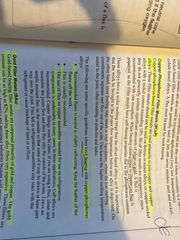![]()
![]()
![]()
Use LEFT and RIGHT arrow keys to navigate between flashcards;
Use UP and DOWN arrow keys to flip the card;
H to show hint;
A reads text to speech;
3 Cards in this Set
- Front
- Back
- 3rd side (hint)
|
What are aluminum silicone filler metals (BAISi)? What is the recommended carburizing flame? |
Aluminum silicon-based filler metals are used to braze aluminum and aluminum alloys. Flux must be used and cleaning is essential. Remove all oxides from the joint surfaces. Remove oxides from filler rod. Cover all surfaces with liquid flux immediately to prevent oxidation. Aluminum oxidizes very rapidly, even at room temperatures and oxidation is accelerated when heat is applied. Flux prevents oxidation by providing a fluid cover |
|
|
|
What is copper-phosphorus fillet metals? (BCuP) |
Used primarily to join, copper, and copper alloys. These filler metals should be used on ferrous or nickel alloys, or copper-nickel alloys with a nickel content exceeding 10%. BCuP fillers are inexpensive because they don’t have silver or gold. A flux is recommended except with copper to copper These alloys have wider melting range than silver based alloys. Overheating may come in total liquidation, Where the low melting point constituents separate and flow out of the joint. This leaves a higher melting temp metal in the joint, often resulting in pin holes and leaks Recommended flame is neutral to slightly carburizing. Keep feather of flame off work Flux is usually recommended The use of flux on copper assemblies untitled for use on refrigeration components is undesirable in many cases |

|
|
|
What are braze welding filler metals? |
Braze welding filler metals are mainly copper/zinc alloys aka BRASS. That contains small amounts of tin, iron manganese and silicon to minimize zinc vaporization and increase strength and hardness. Most braze welding filler metals are applied manually using a oxyfuel torch. Originally developed for repairing cracked or broken cast iron components |

|

